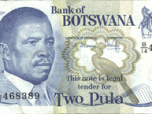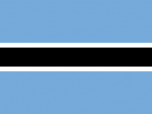
 The Republic of Botswana used to be a British Protectorate of Bechuanaland. It became an independent country on September 30, 1966, and has referred to itself as a Republic ever since. For those who have not been to Botswana, the only insights into daily Botswana life is probably those provided by author Alexander McCall Smith in his books, including his bestseller, The No. 1 Ladies Detective Agency.
The Republic of Botswana used to be a British Protectorate of Bechuanaland. It became an independent country on September 30, 1966, and has referred to itself as a Republic ever since. For those who have not been to Botswana, the only insights into daily Botswana life is probably those provided by author Alexander McCall Smith in his books, including his bestseller, The No. 1 Ladies Detective Agency.
The landlocked nation of Botswana has Namibia to its west, northwest, Zimbabwe to the east, and South Africa to the south as its neighbors.
McCall Smith’s books provide accurate accounts, showcasing a slice of life in this landlocked country whose borders is home to three of the richest diamond-containing formations in the world. Since declaring its independence, Botswana has grown into a self-sufficient country with high standards in its economy, education and social services, unlike other neighboring African countries, so much so that it has become expensive to get around.
Most of Botswana’s geography is a basin of sand and savannah laden with scrub. Its major attraction, the Kalahari, is a vast expanse of semi-arid valleys. It stretches to almost 85 percent of the entire Botswana, covering the whole of the central and southwestern regions.
If you have the occasion to go up North, the Okavango River is worth visiting. It flows from Namibia and into the Okavango Delta. The country also has wildlife reserves that make Botswana an authentic African country. Worth visiting are the Moremi Wildlife Reserve and the Chobe National Park, as well as the Makgadikdadi and Nxai Pans National Park, where you will find African fauna at its richest.













